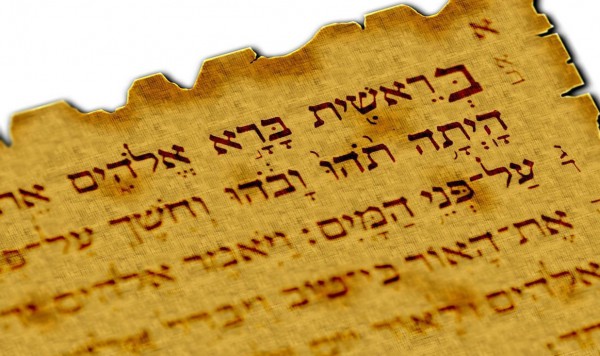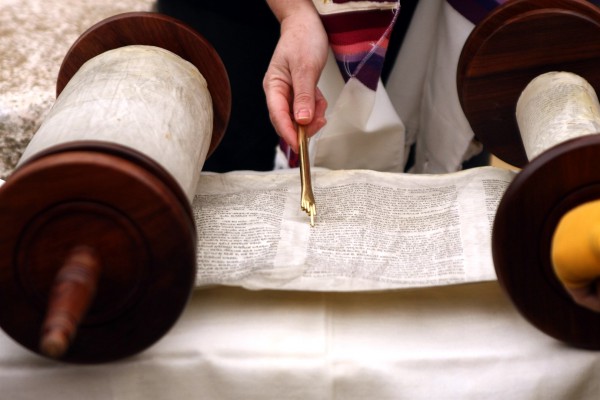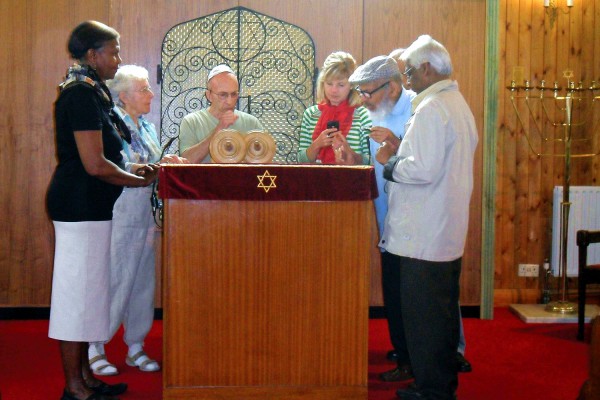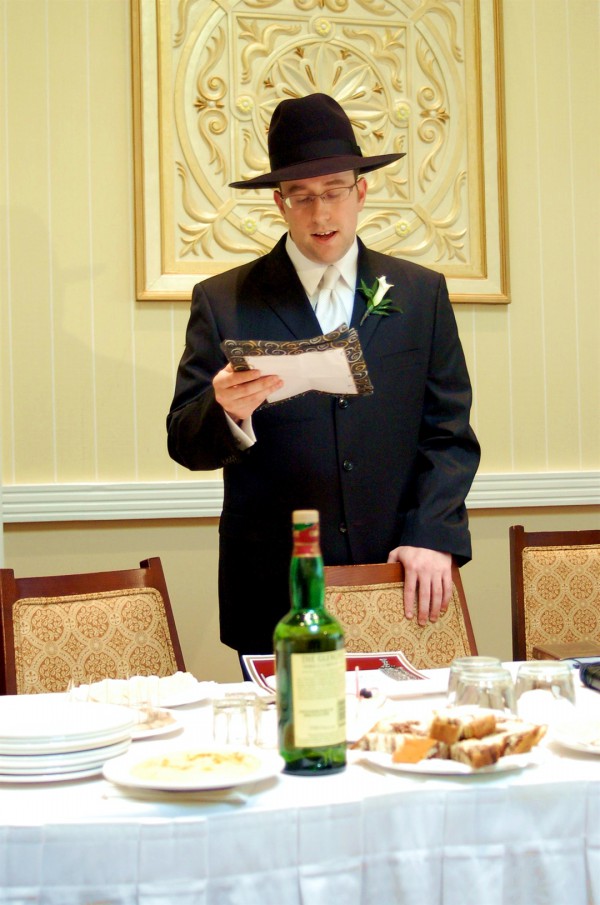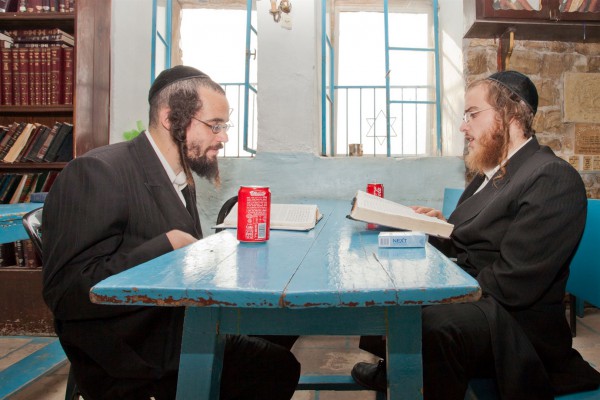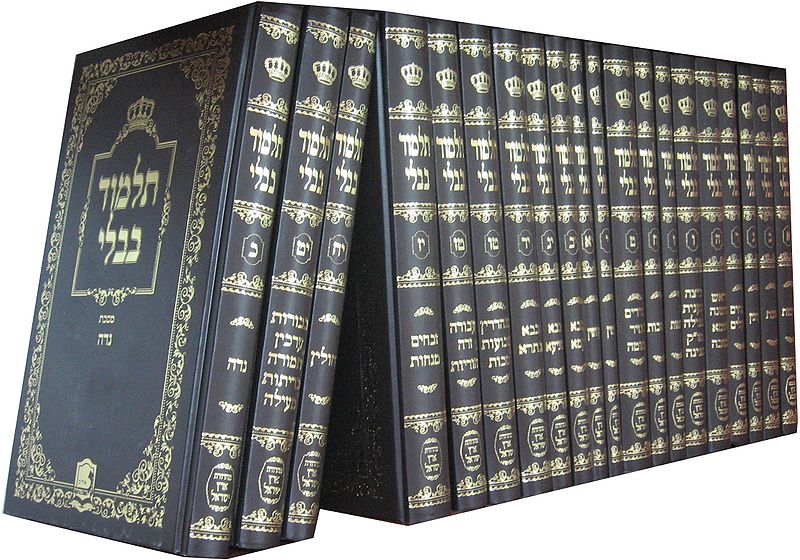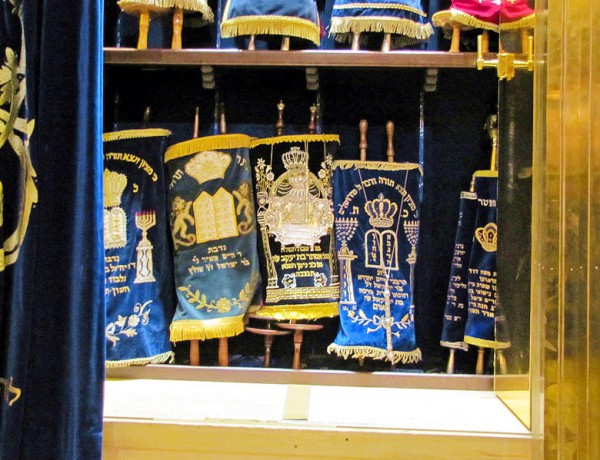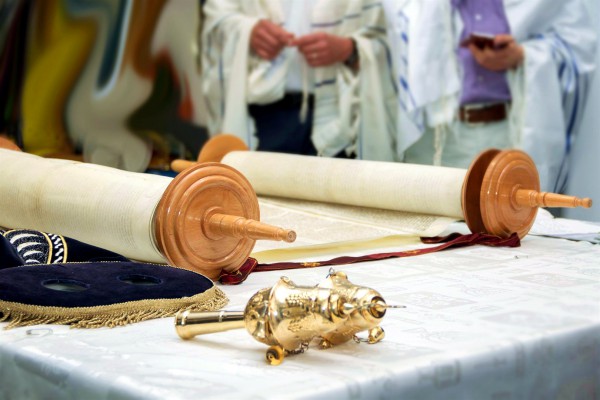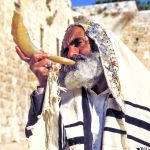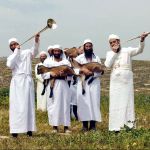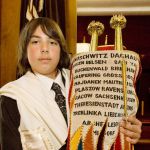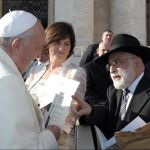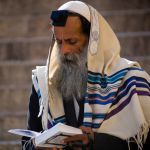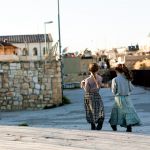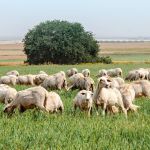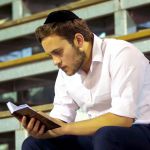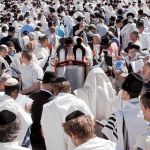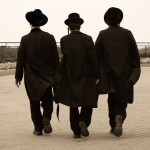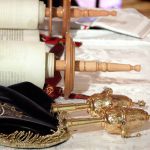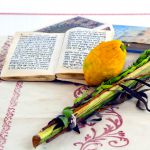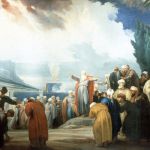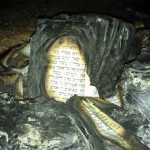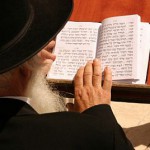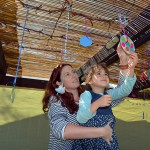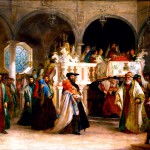“These commandments that I give you today are to be on your hearts.” (Deuteronomy 11:18)
With Rosh HaShanah, Yom Kippur, and Sukkot almost upon us, we have only a few more readings left in this year’s Torah reading cycle. In just a few weeks, we will once again restart the annual cycle of Torah readings.
The Jewish holiday of Simchat Torah, which takes place this year on the evening of October 4th, will mark the end of one annual cycle of weekly Torah readings, and the beginning of another.
While many Christians negate the importance of the Torah (the Five Books of Moses), it is truly at the heart of the Jewish People and Judaism.
The reading of the Torah is central to synagogue worship. It is recited in part during the morning services of Monday, Thursday, and twice on Saturday or the Shabbat.
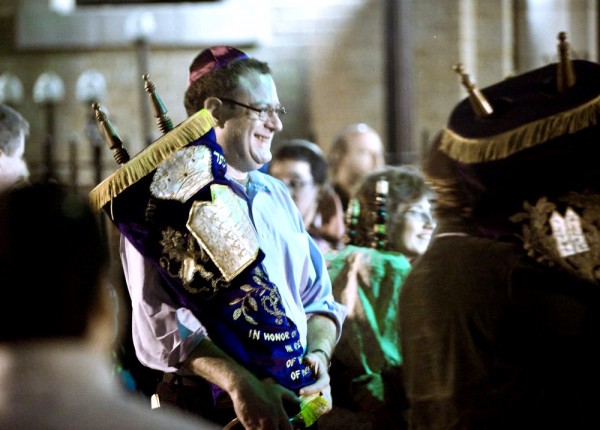
Torah scrolls are paraded in front of the United Synagogue of Hoboken on Simchat Torah. (Photo by Joe Epstein)
We are in good company when we read the Torah out loud.
According to Jewish tradition, the practice of reading the Torah aloud before the assembly dates to the time of Moses who is said to have publicly read the Torah on Shabbat, on festivals and on Rosh Chodesh, the beginning of the new month.
The Talmud teaches that Ezra the scribe, who lived at the time the Jewish People returned to Jerusalem from Babylonian exile in the sixth century BC, added Torah readings on Mondays and Thursdays and on Shabbat afternoons.
Mondays and Thursdays were selected because on these days Jewish people would go to the towns to shop and trade.
Since the time of the Maccabees during the 2nd century BC, this practice was at times suspended, but the public reading of the Torah has continued uninterrupted.
There are two approaches to the readings that go back to historical times.
In one, the Torah is divided into 155 portions and read in a three-year cycle. This is still practiced today within the Reform and Conservative movements.
In Babylonia, the Torah was divided into 54 consecutive portions to be read through in a one-year cycle. This approach is still used by the Orthodox and most Conservative Jews today. Special Torah readings are inserted on the holidays. Bibles For Israel bases its reading schedule on this same 54 reading schedule.
In the synagogue, a Torah service coordinator called the Gabbai calls people up to the bimah (raised platform from which the Torah is read) for the Torah reading, which is divided into portions aliyot (plural for aliyah, meaning ascent or going up).
Two people on the bimah are required for the actual reading: the person reading the Torah and the person who corrects the reader’s pronunciation and chanting of the trop, which is Yiddish for ta’mim or musical signs that determine how the text is chanted.
This is necessary since the text in the Torah scroll is devoid both of punctuation and of musical notations. These notations are available in the Masoretic text, the authoritative Hebrew and Aramaic text written sometime around 10 AD by scholars in Tiberias Israel, and in particular by Aaron ben Moses ben Asher.
At least three others are called to the bimah for the aliyah in which they each recite a special blessing before the reader continues with the next portion.
Being called up is a special honor; therefore, the first reading is given exclusively to one who is a descendant of the Kohanim (Jews of priestly descent). The second oleh (person called to read) is a descendant of the Levites. The third is a yisr’el—a Jew who is neither a Kohen nor a Levi.
Readers use a special pointer fashioned in the shape of a finger called a yad or literally hand, to keep their place. The yad ensures that the text remains unobscured so that others at the bimah can follow along.
The removal of the Torah from the Aron HaKodesh or ark involves a procession in which the Torah is carried through the sanctuary while hymns are sung.
It is carried in the arms of the Chazzan (the one who chants the service), on Shabbat and holidays. Whenever the Torah is removed from the ark, the Chazzan faces the congregation and recites the Shema (Here oh Israel the Lord your God is One God).
He continues with Echad Eloheinu, gadol Adonenu (One is our God, great is our Lord).
The congregation responds with verses from Chronicles and Psalms. The traditional prayer that’s read when the Torah is returned to the ark is called Eitz-Chayim hi, which begins “It is a Tree of Life to those who hold fast to it.”
Before the Torah is returned to the ark, it is paraded through the congregation in order to allow worshipers to pay reverence by kissing the Torah scroll. This is done by first kissing the hand, or spine of the Siddur (Jewish prayer book), and then touching it gently to the Torah scroll cover.
The public reading of Torah is not enough. Studying Torah is also essential.
The commandment to study Torah is linked with the teachings of the rabbis as set down in the Babylonian Talmud (a compendium of rabbinical interpretations of the Torah).
The specific dictate reads: “And the study of Torah is equivalent to them all” (Shabbat 127a), meaning that it is the greatest commandment.
The Talmud explains the reason for this, saying of one who studies the Torah, “He becomes a partner in bringing the Divine Presence among the People of Israel” (BT Sanhedrin 99b).
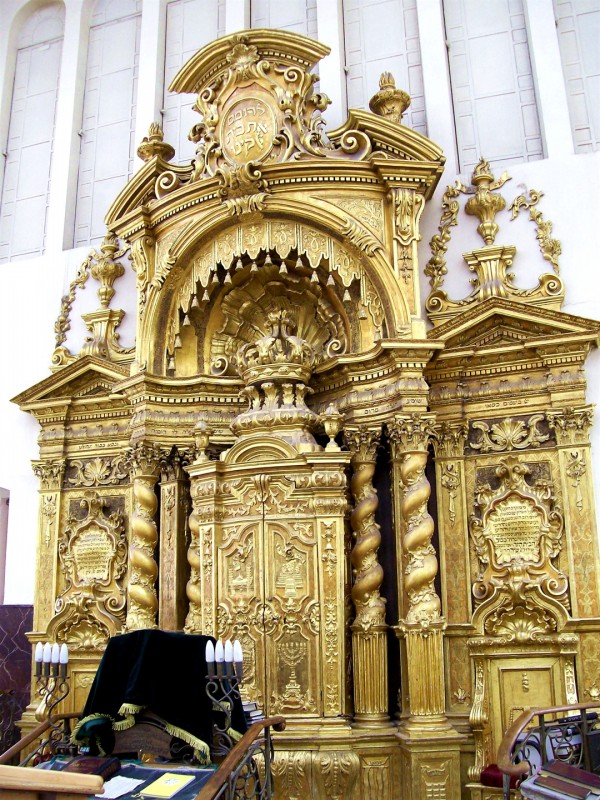
The Aron Kodesh (Torah ark or closet) the Ponevezh Yeshiva (Orthodox Jewish seminary) in Bnei Brak, Israel.
D’var Torah: Giving a Word of Torah
“Be diligent to present yourself approved to God as a workman who does not need to be ashamed, accurately handling the word of truth.” (2 Timothy 2:15)
A darshan (interpreter or explainer) provides a d’var Torah, a discussion or written essay based on the Torah portion for the week. The explanation of the Torah portion, which might focus on certain words or verses or be an overview, is called the drash (דרש—to seek out, study, investigate).
Often the rabbi gives a d’var Torah (Word of Torah) instead of a sermon during a worship service, but anyone can give one by reading the Torah portion and studying various other divrei Torah (plural of d’var Torah).
In fact, it is considered an honor to be chosen to present a d’var Torah since presenting one fulfills the commandments to study Torah, to teach Torah, and allows one to remind others that the study and interpretation of Torah is for everyone and not restricted to rabbis.
Those who prepare drashes are part of a long historical line of those who have interpreted the Torah.
The PaRDeS (garden or orchard) method of Jewish exegesis in preparing a drash is the traditional approach for studying Jewish text. In this method, the darshan uses four approaches to the text, each one considered deeper than the next:
- Peshat—meaning simple—the plain, straight, literal meaning of the text. This is considered the keystone to understanding Scripture.
- Remez—meaning hint—the symbolic or allegoric consideration that hints at the depth of the text
- Deresh—meaning concept, from the Hebrew darah (inquire/seek)—a look at comparative or metaphorical meaning.
- Sod—meaning hidden—the secrets of the text or hidden meanings.
Studying Torah in Pairs and Groups
Traditionally, Torah is studied in a group with at least one other person. This approach is called havruta meaning fellowship.
In studying together members endeavor to apply the teaching to their own lives. It is common for students to study together in a beit midrash (study hall) along with other havrutot (plural for havruta), where the sounds of study and debate fill the air.
The idea of this group approach to learning can be traced to the Talmud, which says that understanding the Torah is only possible in a group, (haburah) (Babylonian Talmud [BT], Berakhot 63b).
The word haburah has the same root as havruta—haver / חבר, which translates as friend in English.
Another example of the Talmud’s emphasis on studying in pairs is the verse, “Two scholars sharpen one another” (BT Ta’anit 7a)—which interpreted means that two scholars, by their discussion and debate, can help to sharpen each other’s understanding of the text.
“As iron sharpens iron, so one person sharpens another.” (Proverbs 27:17)
The Torah: Jewish Interpretation
Historically in Judaism there have been three approaches associated with Biblical interpretation.
The first is the Palestinian-Babylonian school associated with the Pharisees, the first century rabbinical sect that ruled at the time of Yeshua (Jesus).
The second is the allegorizing Hellenistic (Greek) school as represented by Philo. When compared to the interpretation of the Pharisees, it might be considered as being the secular approach of the time (first century AD).
The third approach is the sectarian prophecy-oriented approach of the Essenes who are believed to have written the Dead Sea Scrolls.
The PaRDeS approach adopted by the Pharisees ultimately dominated and is seen in the works of the Mishnah, Talmud, and other rabbinic texts.
Their four-step approach ultimately led to the development of much lore in connection with the characters of the Bible or Torah, some of which are very entertaining and remarkable.
That lore is written as stories or parables that attempt to answer ethical, practical, theological or legal questions—to fill in “gaps” in the Scripture.
This body of rabbinic literature is collectively referred to as midrash which means exposition or investigation from the root drash, referred to earlier.
Each individual story is also called a midrash.
For example, one well-known midrash attempts to answer the question of how Abraham came to be chosen by God.
The Bible tells us nothing as to why Abraham was chosen by God; however, this midrash teaches that one night Abraham was told to bring food to the many idols that his father kept. Instead of distributing the food among the idols, he destroyed all but the largest one and then placed all of the food at the foot of this idol, placing a mallet in his hand.
When Abraham’s father was faced with this scene the next morning, he asked Abraham to explain what had happened. The boy Abraham told his father that the big idol smashed the smaller ones and stole their food.
His father told him that was not possible. This realization forced his father to change his perspective on his worship of idols.
Yeshua and the Torah
The Tanakh (Old Testament) continues to be important in the Brit Chadashah (New Testament).
Yeshua (Jesus) faithfully attended the synagogue on Saturdays, the Sabbath, and read from the Tanakh.
Luke 4:16–19 reveals that Yeshua was given the honor of reading from the prophets, the Haftarah, when visiting His hometown of Nazareth. There he recited a prophecy about Himself:
“The Spirit of the Lord is on me, because he has anointed me to proclaim good news to the poor. He has sent me to proclaim freedom for the prisoners and recovery of sight for the blind, to set the oppressed free, to proclaim the year of the Lord’s favor.” (see also Isaiah 61:1–2)
Matthew 4:1–11 reveals that both Satan and Yeshua were completely familiar with the Torah. After fasting for 40 days in the Judean wilderness, Satan tempted Yeshua to turn stone into bread, to jump off the Temple so angels would save Him, and to receive the kingdoms of the world if he would only worship Satan.
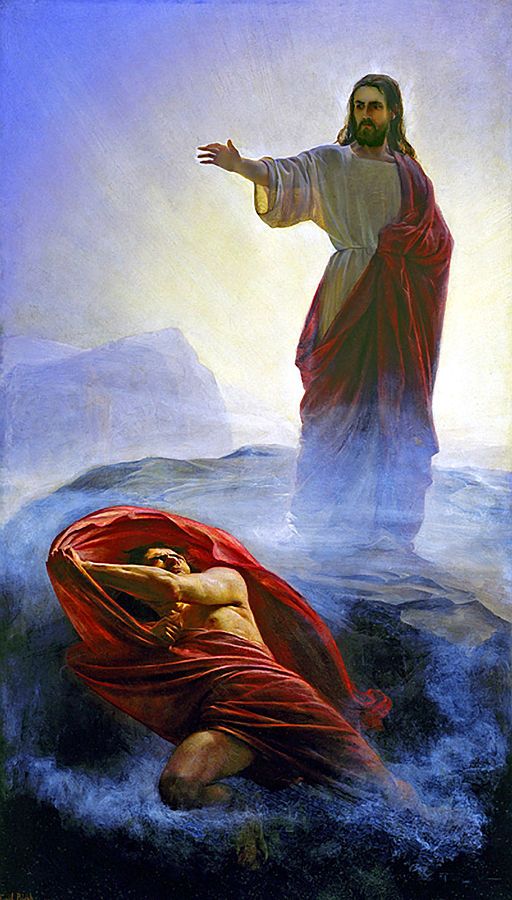
Carl Heinrich Bloch’s painting of the Temptation of Yeshua (Chapel at Frederiksborg Palace in Copenhagen)
At each attempt, Yeshua recited Scripture from the Tanakh (Old Testament) to put Satan in his place.
For example, when told to turn stone into bread, Jesus responded with a verse from the Torah when He said, “It is written: ‘Man shall not live on bread alone, but on every word that comes from the mouth of God.’” (Deuteronomy 8:3)
In this and many other places in the Brit Chadashah, we have ample proof not only of Yeshua’s knowledge of the Torah, but of its spiritual authority.
The Torah has lost none of that authority.
Ultra-Orthodox Jews devote their entire life to its study and interpretation drawing on such texts as the Talmud (compilation of oral laws, supplemental laws to Scriptures with midrashim and commentaries) along with the many other midrashim written by scores of rabbis throughout the ages.
Today it is not uncommon for a regular member of a congregation to present a midrash to the congregation, carrying on the tradition of drawing wisdom from the laws of Moses and the five books that form the Torah, while filling in details as a way to answer questions of our day.
One critical question, however, will only be answered by those who boldly bring God’s Word to the Jewish People and the nations.
That question is this: “Was Yeshua a mere moral teacher or was He something more?”
A modern scholar of literature named C. S. Lewis writes in his book Mere Christianity how the answer to that question is found in Scripture itself:
“A man who was merely a man and said the sort of things Jesus said would not be a great moral teacher. He would either be a lunatic—on the level with the man who says he is a poached egg—or else he would be the Devil of Hell. You must make your choice. Either this man was, and is, the Son of God, or else a madman or something worse.”
This also answers the question of King Solomon when he asked,
“Who has gone up to heaven and come down? Whose hands have gathered up the wind? Who has wrapped up the waters in a cloak? Who has established all the ends of the earth? “What is his name, and what is the name of his son? Surely you know!” (Proverbs 30:4)
Those who follow Yeshua and believe that He is the promised Messiah and Son of God, as He claimed to be, have access not only to the Words of God but also to the ultimate teacher and interpreter of God’s word—His Ruach HaKodesh (Holy Spirit).
The Ruach provides deep insights into Scriptures that even the prophets have longed to know.
Yeshua said, “It is written in the Prophets: ‘They will all be taught by God.’ Everyone who has heard the Father and learned from Him comes to Me.” (John 6:45; see also Isaiah 54:13, Jeremiah 31:31–36)




